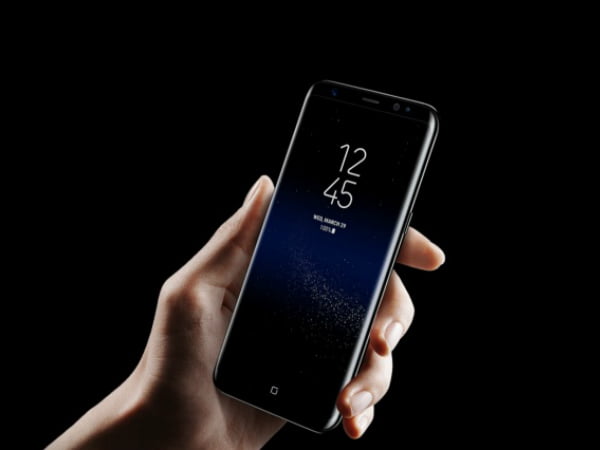
/cdn.vox-cdn.com/uploads/chorus_image/image/55819479/razer_deathadder_elite_1.0.jpg)
So you’ve picked out (or built) the perfect gaming PC — that’s the hard part — but now what you need are accessories. Because while you may have a monstrous rig capable of running the most graphics-intensive games on the market at 60 frames per second, you won’t have a very good time actually playing those titles if your keyboard is clunky, your headset uncomfortable, and your mouse plagued by bad third-party customization software.
The good news is that quality gadgets from big-name brands and low-key manufacturers are a few mouse clicks away on Amazon, Newegg, and elsewhere. That’s turned the once research-intensive process of peripheral buying into a relatively quick and cheap exercise. And if you’ve historically been a console player, like myself, you might remain a bit oblivious to what brands are worth your investment, and how much you really need to spend to get something quality that both meets your needs and can withstand the wear and tear of countless multi-hour sessions.
As someone who just recently outfitted a gaming PC here in The Verge’s West Coast office with some affordable gaming accessories (specifically to play Playerunknown’s Battlegrounds), I can say that a mouse, keyboard, and headset combo is a game-changing upgrade. So if you’re still outfitting that new rig, dusting off an old one, or just looking to get back into PC gaming without spending a fortune, there are quite a few possibilities out there for getting PUBG or Overwatch-ready for under $150.
Here are some inexpensive and capable options for the must-have accessory essentials:
BUYING A SOLID KEYBOARD:
LOGITECH K360 WIRELESS KEYBOARD, $24
/cdn.vox-cdn.com/uploads/chorus_asset/file/8880591/vrg00sup_170719_1859_logitech_k360.jpg)
Dropping a ton of cash on a fancy, glowing keyboard isn’t advisable in my book because, well, a keyboard really only has to stand out in two categories: comfort and ease of use. In that department, the Logitech K360 hits both marks for a wildly low price tag. It’s wireless, yet it lasts up to three years using just two AA batteries, and it retains the function and comfort level of a full-sized keyboard in a more compact form. Sure, it might not flash rainbow colors, or have the perfect aesthetic sound and feel of a mechanical keyboard with Cherry MX switches, but it gets the job done for less than the price of a pair of movie tickets.
REDRAGON K552 KUMARA, $33
/cdn.vox-cdn.com/uploads/chorus_asset/file/8880585/vrg00sup_170719_1859_redragon_kumara_keyboard.jpg)
Redragon is a brand I stumbled upon via Amazon that, at first glance, looks too good to be true. The company’s products all have stellar ratings, and its prices are better than every big-name gaming brand. But Redragon was actually spun out of a third-party white-label manufacturer, meaning it designed and manufactured electronics for companies to slap their brand name on. With its expertise, the company now makes its own ultra-affordable gear, and you won’t easily find a deal as good as the Redragon K552 Kumara. It may not feature the best switches out there, but it gives you the loud, clacky joy of a mechanical keyboard many times the price.
CORSAIR K55, $50
/cdn.vox-cdn.com/uploads/chorus_asset/file/8880573/vrg00sup_170719_1859_corsair_k55_2.jpg)
If you do happen to be looking for something a little more flashy than your standard keyboard, and without the audible punchiness of a mechanical unit, Corsair’s K50 has low-key RGB backlighting and a number of ergonomic features that make it a bit more comfortable for longer sessions. For instance, it has a detachable rubber wrist rest and can be angled to the optimal position for your hands while playing. It has also six macro keys you can customize without needing any third-party software — programming them involves recording the multi-key functions right on the device’s onboard memory. The same goes for the lighting effects.
BUYING A RELIABLE GAMING MOUSE:
REDRAGON M801 MAMMOTH, $27
/cdn.vox-cdn.com/uploads/chorus_asset/file/8880583/vrg00sup_170719_1859_redragon_mammoth.jpg)
Like Redragon’s other entry-level gear, the M801 Mammoth mouse isn’t the best of the best. It may go lighter on the build quality, doesn’t score as highly as Razer and others in the aesthetics department, and doesn’t have customization options quite as robust as those of more expensive brands. Yet, like most everything the company makes, it is fantastic for the price. For nearly half to one-third the cost of more expensive gaming mice, Redragon’s mid-tier Mammoth mouse is more than capable for a vast majority of gaming needs, and 16,400 DPI is more than enough sensitivity for most players out there.
LOGITECH G602, $39
/cdn.vox-cdn.com/uploads/chorus_asset/file/8880589/vrg00sup_170719_1859_logitech_g602.jpg)
While it may not be as highly recommended as the higher-end Logitech G502, the wireless 602 is a slightly cheaper, cordless version of what is widely considered to be one of the best gaming mice on the market. It’s comfortable, comes with powerful software for customizing profiles for its staggering 11 programmable buttons, and it lasts up to 250 hours on a single pair of AA batteries. Even better: you can get it on Amazon for less than $50, which is cheaper than most wireless gaming mice out there. For those worried about input lag, don’t be. It’s pretty much imperceptible, unless you’re a professional gamer who’s brain can count milliseconds.
RAZER DEATHADDER ELITE, $55
/cdn.vox-cdn.com/uploads/chorus_asset/file/8880587/vrg00sup_170719_1859_razer_deathadder_elite.jpg)
If you’re willing to spend a little bit more money, but not delve too deep into the high-end market, no mouse is more worth your money than Razer’s DeathAdder. It’s lightweight, ergonomic and comfortable, and looks sleek and understated for a piece of gaming gear. Razer’s Synapse customization software is relatively easy to wrap your head around while still being very powerful, and it cloud saves your profiles for individual games so you don’t have to tinker inside in-game menus. Plus, it has a glowing Razer logo that changes colors. It’s more subtle than most of the fluorescent extravagance of most gaming gear, including Razer’s other hardware, but just cool enough to warrant appreciating every now and again when you’re eyes aren’t glued to the monitor.
BUYING A COMFORTABLE (AND RELATIVELY CHEAP) HEADSET:
LOGITECH G430, $39
/cdn.vox-cdn.com/uploads/chorus_asset/file/8880579/vrg00sup_170719_1859_logitech_g430.jpg)
Logitech may not have the clout of Sennheiser or Turtle Beach when it comes to gaming headsets, but it does happen to make one of the better and comfier low-cost pairs out there. The G430 is lightweight and not too gaudily designed, but the real selling point is the surround sound feature. Logitech uses Dolby 7.1, and that makes a world of difference when it comes to getting the most out of explosive shooters and stealth / survival games where ambient noise pickup is a strategic advantage. For less than $50, you’d have a hard time finding a better surround sound-capable headset and mic combo.
ASTRO A10, $60
/cdn.vox-cdn.com/uploads/chorus_asset/file/8880577/vrg00sup_170719_1859_astro_10.jpg)
Astro Gaming is more well known in the high-end console space, due to both its purposeful marketing and its sponsorships of big-name console e-sports squads. But the company, purchased just last week by Logitech, still makes quality gear that’s cross platform-compatible. The wired Astro A10 headset, the cheapest headset the company’s ever produced, is a solid budget buy with respectable audio performance and no-frills design that comes with red, blue, or green color accents.
HYPERX CLOUD, $68
/cdn.vox-cdn.com/uploads/chorus_asset/file/8880581/vrg00sup_170719_1859_hyperx_cloud.jpg)
HyperX, a gaming brand from accessory maker Kingston Technologies, has made name for itself in recent years by making affordable but high-quality gaming headsets that have earned coveted and glowing recommendations from product review sites like The Wirecutter. This particular model, the HyperX Cloud, is the middle unit in the company’s three-model lineup, and it is hands down the most comfortable, best-sounding, most sturdy headset for the price in my experience. For those who don’t want to crack the triple-digit price range — and yet still want something with a healthy amount of professional testimonials backing the bang for the buck — then the HyperX Cloud is the solid choice.
SOME FINAL ADVICE:
The important thing to remember here is that no one gadget is going to work perfectly for everyone. While some consumers might be cool with a lower-cost keyboard and more expensive mouse, the opposite might be true for another person. The goal is to understand that there are reliable options up and down the price ladder, and that you really can get an adequate setup for under $100 if you’re only interested in getting gear that works.
For keyboards, it’s really about whether you care that much about flashy LED lights, complex macro capabilities, and the aesthetics of mechanical keys. For mice, it’s about how serious of a player you are, and whether you need a wide sensitivity range and ultra-powerful customization software. And for headsets, which tend to be the most expensive category outside monitors and PC components, you have to weigh sound quality against comfort and ease of use. Most important, however, is noting that while a better peripheral won’t magically make you a better player, a good one can certainly make the experience of playing way more pleasant.
[Source:-theverge]





